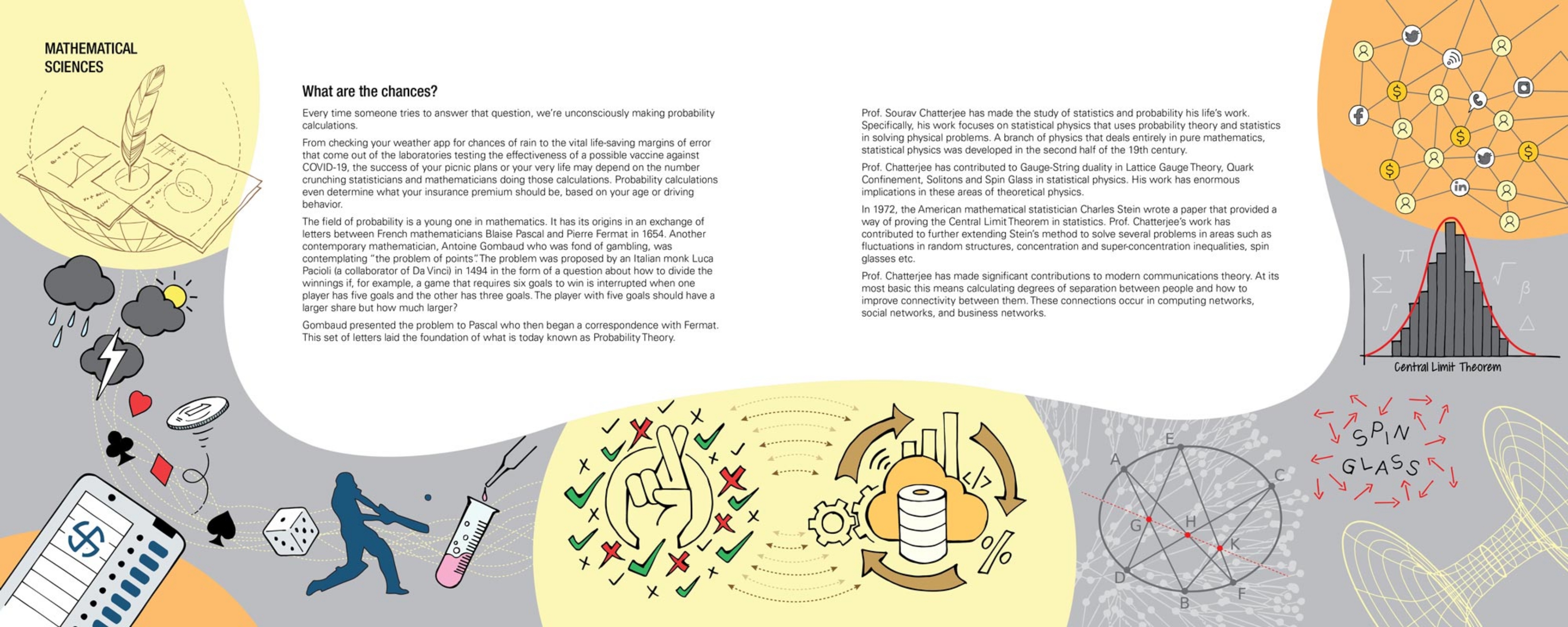The Infosys Prize 2025 in Mathematical Sciences is awarded to Prof. Sabyasachi Mukherjee for his powerful and original work linking two distinct areas: the dynamics of Kleinian group actions and the iteration of holomorphic and anti-holomorphic maps in complex dynamics. His results have reshaped our understanding of conformal dynamics.
Scope and Impact of Work
Prof. Sabyasachi Mukherjee’s work, carried out with his collaborators, has established new and striking instances of Sullivan’s Dictionary, which articulates deep analogies between the dynamics of Kleinian groups and those of rational maps. Originally conceived as a suggestive correspondence rather than a literal translation, this dictionary has acquired new mathematical substance through Prof. Mukherjee’s framework that combines these two kinds of conformal dynamical systems within a single dynamical plane.
Mukherjee’s research has led to a deeper understanding of the dynamics of algebraic correspondences on Riemann surfaces. It has also revealed an unexpected link between anti-holomorphic dynamics and phenomena arising in physics and potential theory. His methods have already been applied to resolve complex-analytic problems using dynamical ideas, and further such applications are anticipated.
A central theme in dynamics is how intricate behavior emerges from iterating simple rules: the Mandelbrot set, defined by quadratic rational maps, is a classic example of this principle. Prof. Mukherjee’s work brings new insight to Tricorns—the counterparts of Mandelbrot sets in the setting of anti-rational quadratic maps—by showing that they correspond to the bifurcation loci of Schwarz reflections. Sabyasachi Mukherjee has developed powerful new tools for exploring the complex structures that arise from iteration.
Bio
Sabyasachi Mukherjee was born in India in 1986 and is currently an Associate Professor in the School of Mathematics at the Tata Institute of Fundamental Research (TIFR), Mumbai. Before joining TIFR, he was a Milnor Lecturer at the Institute for Mathematical Sciences, Stony Brook University. He earned his Ph.D. in Mathematics from Jacobs University Bremen in 2015, after earlier studies at Université Paris 13 and the University of Calcutta.
Prof. Mukherjee’s research lies at the intersection of conformal dynamics, complex analysis, and Teichmüller theory. His work focuses on parameter spaces of rational maps, anti-holomorphic dynamics, combination theorems, holomorphic and anti-holomorphic correspondences, and Sullivan’s Dictionary relating rational maps and Kleinian groups.
Sabyasachi Mukherjee was awarded the 2025 Vigyan Yuva-Shanti Swarup Bhatnagar (VY-SSB) award in Mathematics and Computer Science. He has been invited to deliver a Joint Section Lecture, with Luna Lomonaco, in the Dynamics Section of the 2026 International Congress of Mathematicians in Pennsylvania, USA.
Timeline
Jury Citation
In a prescient note from 1928, Fatou observed a striking analogy between the actions of Kleinian groups and the dynamics of rational maps. This analogy, developed in the 1980s through Sullivan’s pioneering work, gave rise to Sullivan’s Dictionary linking Kleinian groups and rational maps.
Prof. Sabyasachi Mukherjee, together with his collaborators, has greatly extended this program by developing a dynamical theory of Schwarz reflections. His work gives new depth and scope to Sullivan’s Dictionary, establishing it across a remarkably broad class of new examples, thereby demonstrating its fundamental robustness.
Prof. Mukherjee’s research unifies the study of Kleinian group actions, iterations of holomorphic and anti-holomorphic maps, and the dynamics of Schwarz reflections and algebraic correspondences, producing a comprehensive framework that reshapes our understanding of conformal dynamics.

Sabyasachi Mukherjee
I would like to congratulate Sabya for his deep and astonishing work leading to the writing of many new entries in the celebrated dictionary conjectured by Sullivan in the 1980s that links two very different kinds of dynamics. In mathematics, the most celebrated results build bridges between different fields, and Sabya’s beautiful work builds such a bridge.



